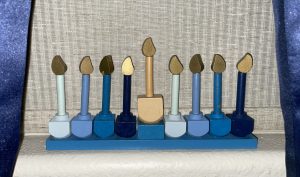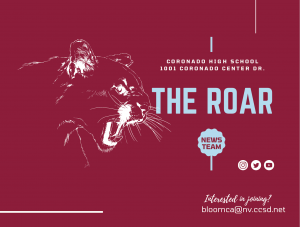by Madeline Vernaci
As winter gets closer and the days get colder, many turn their attention to celebrating holidays with their loved ones. One holiday approaching quickly is Hanukkah, an eight-day Jewish celebration characterized by many traditions, including lighting candles on a menorah, spinning tops called dreidels, and sharing chocolate coins known as gelt. The story of Hanukkah is rich in history and tells a story of great strength and perseverance.
The tradition of Hanukkah, or the Festival of Lights, originates from a time in history when the Israelites were oppressed under a Syrian Monarchy. A priest and his family, known as the Maccabees, resisted and fought back against the Syrian reclamation of their temple. Against all odds, the outnumbered Maccabees fought against the Syrian army and won, taking back their temple. However, when they returned they found that there wasn’t enough oil to keep their menorah going for more than one day. Miraculously, the oil that they had lasted eight days until more could be acquired. To this day, Hanukkah is a celebration of that miracle, the miracle of the oil, which is represented by the lighting of the menorah.
“For Hanukkah, everyone in my family has their own menorah, and for each night of Hanukkah a different person lights their own menorah every night while we say the blessing,” sophomore Sabrina Skoboloff said. “The tables are always full of fried food; some examples would be latkes and sufganiyot.”
Both latkes (potato pancakes) and sufganiyot (jelly donuts) are some of the most popular traditional Jewish foods, but many people have many different traditions. Many of them involve oil and fried foods to celebrate the Festival of Lights.
“We typically eat fried foods on Hanukkah to remember the miracle of the oil that lasted for eight days,” freshman Bayley Blitz said. “Latkes and sufganiyot are just the main two that most families will include in their Hanukkah celebrations.”
There are many different Hanukkah traditions, not just making food for the celebrations. The tradition of playing dreidel is often traced back to the same Jewish oppression under Syrian rule when practicing their faith was illegal. As the story goes, children would write Hebrew letters on tops in order to study them, and if they looked, all that the Syrian guards would see were children playing a game. While playing dreidel is a fun tradition, of all traditions Jewish people observe during Hanukkah, one of the most important is lighting the candles on the menorah.
“For Hanukkah, we light the menorah every night and eat traditional food for the holiday,” freshman Tzofiya Sterling said. “I remember one year we were in New York for Hanukkah, for my grandpa’s birthday, and we lit the candles in the hotel, which was a really memorable experience for me.”
Arguably one of the most important and well-known Hanukkah traditions is saying a blessing, then lighting the candles on the menorah. Often celebrated at sundown, the candles on the menorah must be placed and lit a certain way; they must be placed right to left, then lit left to right.

The tradition of the celebration of Hanukkah has been passed down from generation to generation, to become what it is today. A beloved winter holiday, the Festival of Lights will continue to bring joy to the hearts of anyone who celebrates it.











